|
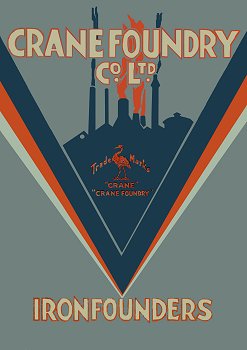
The front cover of the 1928
catalogue. |
A look at the company’s 1928
catalogue reveals over 300 products, including all kinds
of weights, sad irons, pots and pans, ventilators, mole
traps, door furniture, hinges, nails, camp ovens, and
castors.
At this time most of the company's
products were for the general metalware market and still
carried the Crane name or trade mark.
The product range was expanding to
include specialised engineering castings for the
electrical and mechanical engineering industry. These
would have included parts for electric motors,
generators, vehicles, locks, and machinery and would not
have carried the Crane name or trade mark.
Eventually the company would
solely concentrate on this section of the market and the
production of Crane metalware would end. |
| Crane produced a wide range of irons. Sad irons
where the simplest and were heated in front of the fire. |
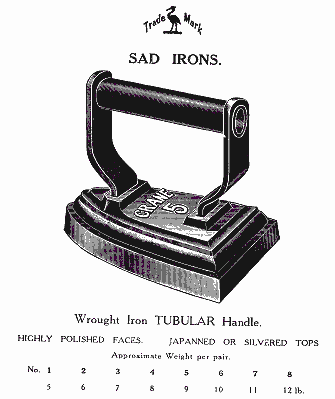 |
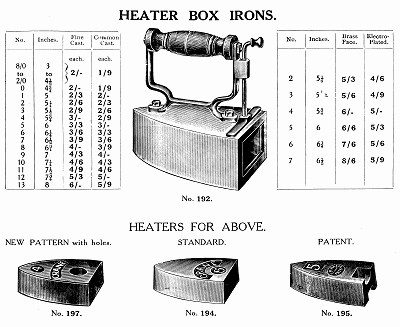 |
Heater box irons were a little more complex. The
iron heater was heated in front of the fire or in an
oven and inserted into the iron while still hot. This
must have been a tricky operation as careful handling
was required. If you had a couple of heaters, one
could be warming while the other was in use. |
| Crane bar weights were produced from 4oz. to 56lb. |
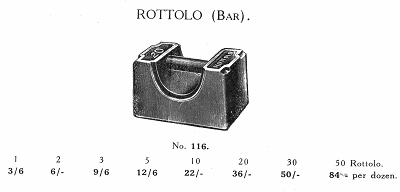 |
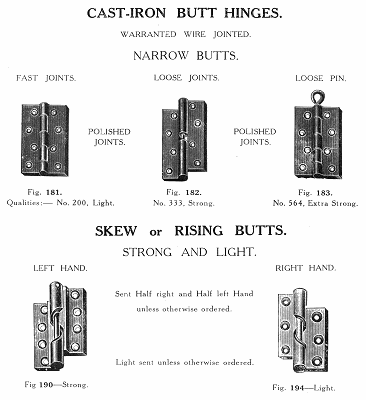 |
The foundry produced a range of cast iron hinges
that also included broad butt hinges and shutter hinges. |
| The catalogue has several pages of pulleys,
including ring pulleys, single guard pulleys, full guard
pulleys, hot house pulleys, awning pulleys, and clothes
line pulleys. Most had iron wheels, although some
brass wheels were available at double the price. Most
were black japanned but some galvanised models were
included. |
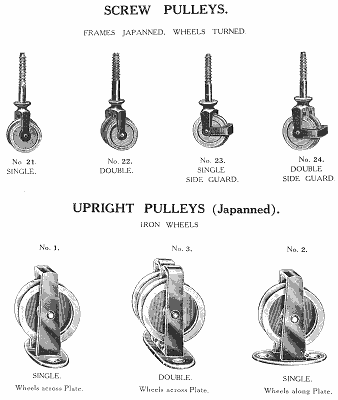 |
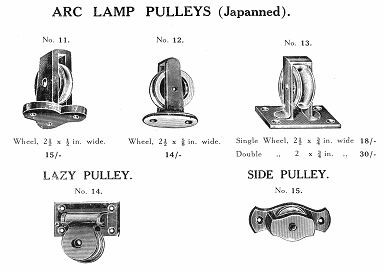
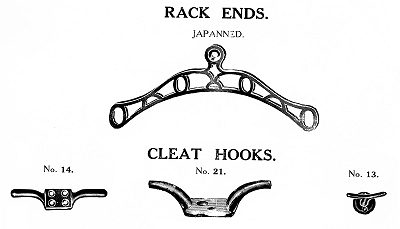 |
The rack ends were black japanned and the cleat
hooks were either japanned or galvanised. |
| Ornate door knockers and letter boxes were available
along with a range of door latches. |
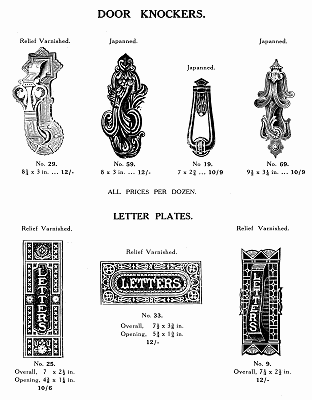 |
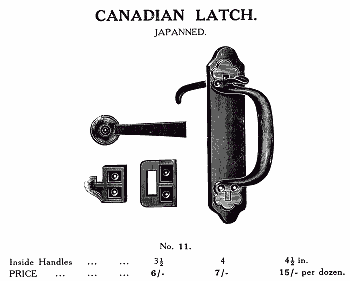 |
The door latches included four stable door latches
in different styles in both malleable and wrought iron. |
| The cast iron furnace pans were available in sizes
from 6 to 50 gallons and could be found in many
Victorian houses. |
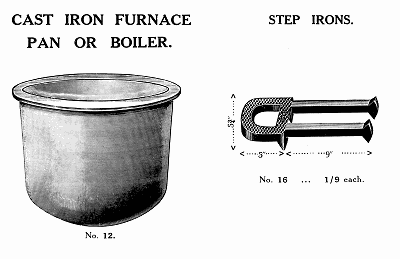 |
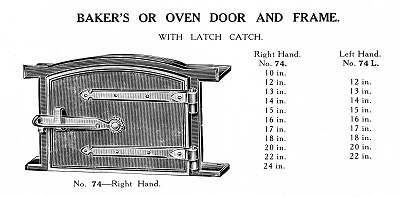 |
Rectangular furnace doors and frames were also
available as were furnace bars and grates. |
| The range of pots included long and short three
legged pots, Danish pots, French pots, St. Lucia pots,
and African rice pans. All available in a range of
sizes. |
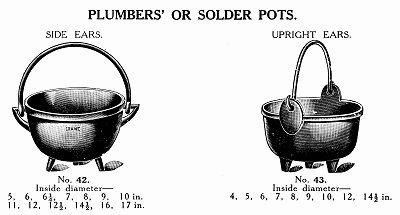 |
 |
The cast iron coal pots included a gipsy coal pot
with an ornamental bail handle. An optional cast iron
cover was also available for all of the models. |
| The range of cooking pots included camp ovens, bake
pans, frying pans, Havana stoves and Dutch stoves. |
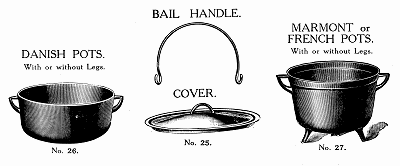 |
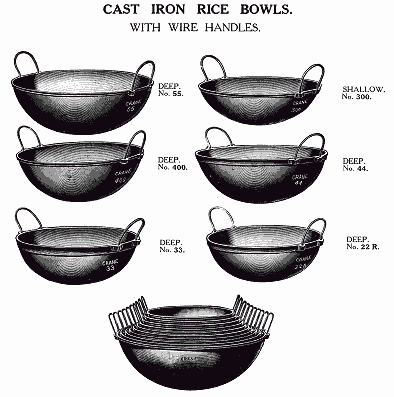 |
There are three pages of cast iron rice bowls in the
catalogue in sizes varying from 7 inches to 25.5 inches
in diameter. |
| The cast iron chests were made in sizes ranging from
12 x 9 x 8 inches to 30 x 21.5 x 18 inches and were
available with or without a hasp and staple. |
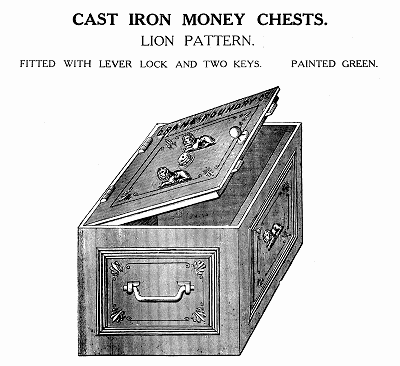 |
|
The catalogue covers a vast range of products and is as
comprehensive as any other that was produced by a local
foundry at the time. |
 |
Return to
the
previous page |
|